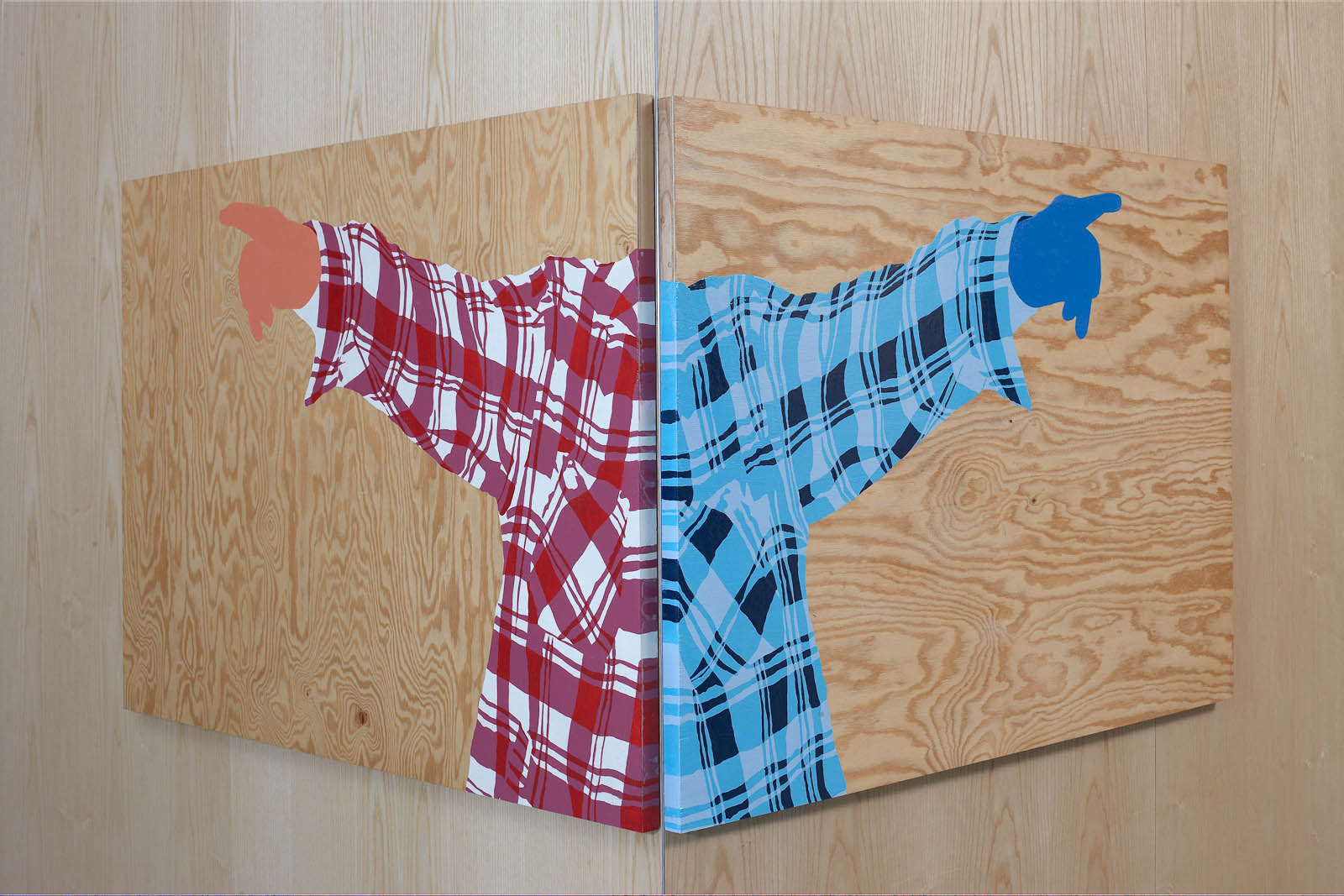































For the new building of the Swedish University of Agricultural Science’s Bio Centrum, Finnish artist Robert Lucander conceived a series of 13 modest-sized paintings, painted with varnish on to individual wood panels. This is the kind of painting Lucander has brought to perfection since the mid 1990s. His previous work while studying art in Berlin (where he still lives and works) had focused on re-readings of Modernist abstraction; but then Lucander discovered for himself that the faces and gestures he encountered in high-street fashion and celebrity magazines, in advertising or on record covers deserve to be abstracted as well. He is not interested in the genre of portrait, let alone in portraying famous individuals, but in grasp ing what is typical – or rather: typically odd – about certain cultural contexts, whether it’s German politicians or Finnish tango singers.
All of these images together form a condensation of the myths and cliches about eco-conscious individuals that were are presented with in the media
Therefore Lucander paints eyes and mouths, hairdo and clothes, but often leaves out the nose and other facial features, or renders them subtly in pencil hatchings. As he does this straight on to wood (of the type also used for shipping crates), the physical presence the abstracted protagonists are inevitably bereft of is replaced with the physical presence of the wood grain; a replacement that is structurally uncanny – ghosts materialised. At BioCentrum, this effect is further enhanced by the way most pieces are hung straight on to similarly wood-panelled walls of the architecture, or as in the case of a series of three images next to the elevator, are distributed across floors: on the first floor, the naked trunk of a birch; on the second, a smiling woman in a patterned sweater clasping it; on the third, the same motif but differently cropped and mirror inverted. Her grin – just eyes and mouth, isolated – is hard to place, as if shifting from friendly to wicked. Other images include a bearded man in his forties, also wearing a patterned sweater, his facial expression slightly aloof (according to the title, he’s a fågelprofessor, a bird professor); a chubby older guy in a patterned turtle neck; young women in striped or chequered dresses; arms pointing in directions; legs in rubber boots.
All of these images together form a condensation of the myths and cliches about eco-conscious individuals that were are presented with in the media, but as media are a part of our everyday experience, also their actual reality: some seem nice, slim and good-looking, some precisely not, even maybe eccentrically resisting normative standards put forth by fashion and advertising, as if reminding us that in fact nature itself resists standardisation, is not always “nice” – does not have to be – and can in fact be harsh and unforgiving. Of course the BioCentrum’s students and staff are not naive tree huggers but people involved in an earnest and advanced scientific discourse; and Lucander’s paintings are anything but hero portraits or caricatures of what they are, or are supposed to be. Quite the opposite: these are the myths, cliches and media realities about human beings and nature that we all – whether scientist, artist, or ordinary viewer- inevitably get entangled with, grow up with, have to come to terms with.
Jörg Heiser
Find the artwork
SLU - BioCentrum Uppsala
Hösten 2011
Almas Allé 5, 756 51 Uppsala, Sverige